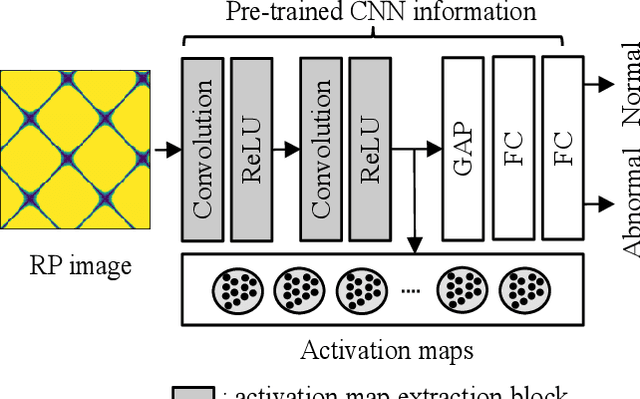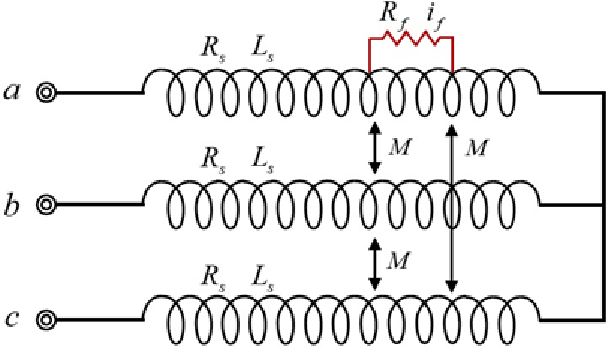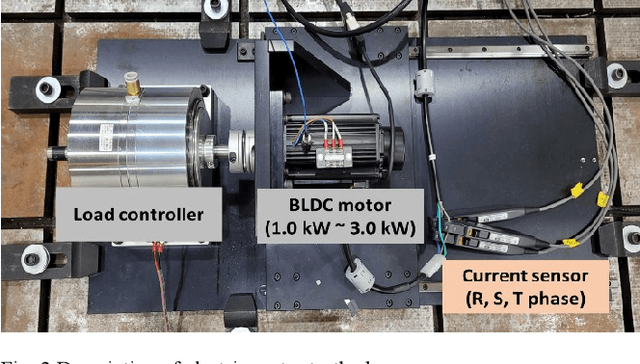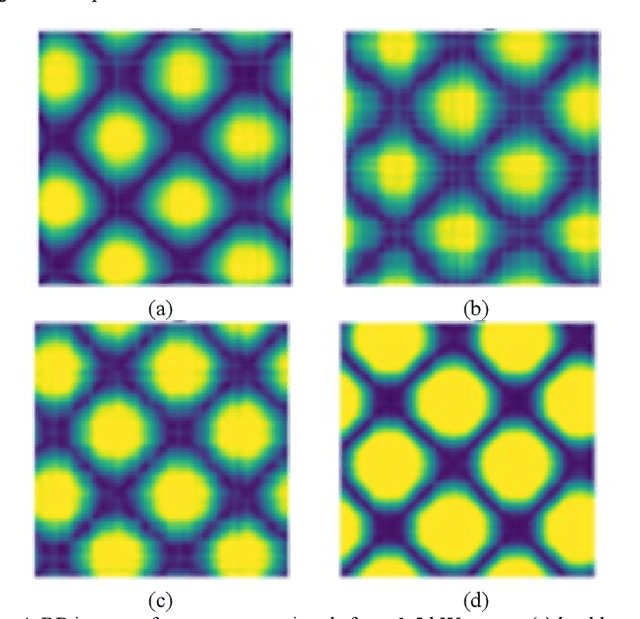J. Bae
Fault Diagnosis of Inter-turn Short Circuit in Permanent Magnet Synchronous Motors with Current Signal Imaging and Unsupervised Learning
Jun 09, 2022



Abstract:This paper proposes machine-independent feature engineering for winding inter-turn short circuit fault that uses electrical current signals. Electrical current signal collected from permanent magnet synchronous motor (PMSM) is subjected to different environmental and operational conditions. To solve these problems, robust current signal imaging method and deep learning-based feature extraction method are developed. The overall procedure includes the following three key steps: (1) transformation of a time-series current signal to two-dimensional image, (2) extracting features using convolutional neural networks, and (3) calculating a health indicator using Mahalanobis distance. Transformation of the time-series signal is based on recurrence plots (RP). The proposed RP method develops from feature engineering that provides the dominant fault feature representations in a robust way. The proposed RP is designed that maximizes the features of inter-turn short fault and minimizes the effect of noise from systems with various capacities. To demonstrate the validity of the proposed method, two case studies are conducted using an artificial fault seeded testbed with two different capacities of motor. By calculating the feature using only the electrical current signal of the motor without the parameters related to the capacity of the motor, the proposed feature can be applied to motors with different capacities while maintaining the same performance.
AI-assisted Optimization of the ECCE Tracking System at the Electron Ion Collider
May 20, 2022Abstract:The Electron-Ion Collider (EIC) is a cutting-edge accelerator facility that will study the nature of the "glue" that binds the building blocks of the visible matter in the universe. The proposed experiment will be realized at Brookhaven National Laboratory in approximately 10 years from now, with detector design and R&D currently ongoing. Notably, EIC is one of the first large-scale facilities to leverage Artificial Intelligence (AI) already starting from the design and R&D phases. The EIC Comprehensive Chromodynamics Experiment (ECCE) is a consortium that proposed a detector design based on a 1.5T solenoid. The EIC detector proposal review concluded that the ECCE design will serve as the reference design for an EIC detector. Herein we describe a comprehensive optimization of the ECCE tracker using AI. The work required a complex parametrization of the simulated detector system. Our approach dealt with an optimization problem in a multidimensional design space driven by multiple objectives that encode the detector performance, while satisfying several mechanical constraints. We describe our strategy and show results obtained for the ECCE tracking system. The AI-assisted design is agnostic to the simulation framework and can be extended to other sub-detectors or to a system of sub-detectors to further optimize the performance of the EIC detector.
 Add to Chrome
Add to Chrome Add to Firefox
Add to Firefox Add to Edge
Add to Edge